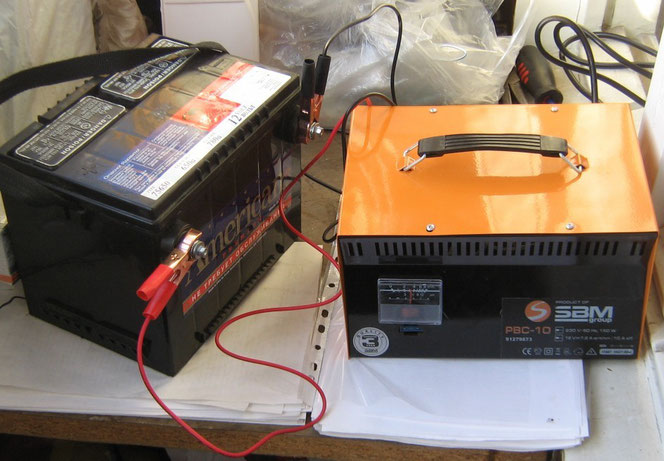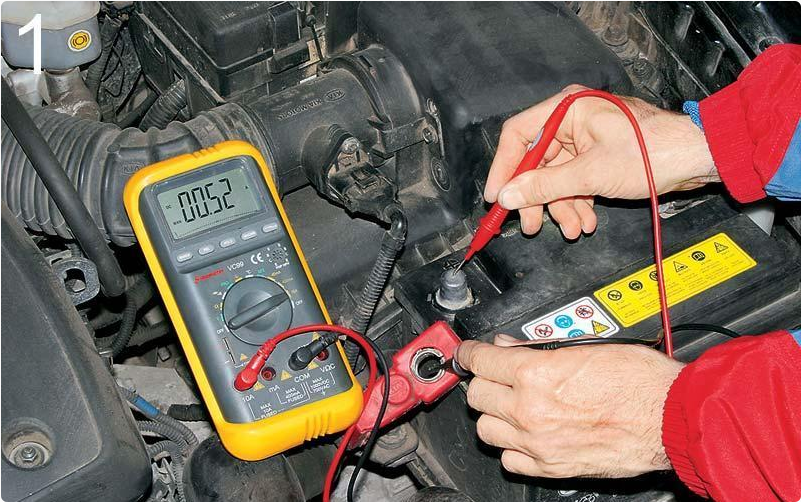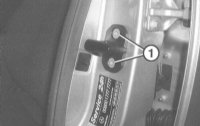Tool:
- Open end wrench 10mm
- Battery charger
- multimeter
- Hydrometer
Parts and consumables:
- rags
Manufacturers recommend removing the battery from the car to charge it. the gas released during this procedure may damage painted surfaces or the interior of the vehicle, depending on the location of the battery. Rapid charging with the battery wires connected can damage the vehicle's electrical system.

1. Remove all lids from battery jars (if any) and cover openings with clean rags to prevent spillage of electrolyte. Disconnect the battery ground cable and connect the charger wires to its terminals (positive to positive, negative to negative), then plug the charger into the mains. If it has a switch, make sure it is set to the 12 volt position.
Note:
If your car's radio is equipped with an anti-theft system, make sure you have entered the correct code before disconnecting the battery.
2. If you are using a charger with more than two amps, check the battery regularly while charging to make sure it is not overheating. Using a slow charger, you can safely leave the battery charged overnight after checking regularly for the first two hours. When charging maintenance-free batteries, certain precautions may be required (eg use of a very low amp charger). Such a battery may have a warning label on it, but if not, consult the manufacturer's representative office or a workshop electrician.
3. If the battery cells have removable lids, check the electrolyte density with a hydrometer every hour during the last few hours of the charge cycle. Inexpensive hydrometers are available from auto parts stores - follow the instructions provided when using them. The battery can be considered charged if within two hours the density of its electrolyte does not change, and the electrolyte itself in the banks bubbles freely. The density of the electrolyte in individual banks should be almost the same. If this is not the case, then one or more cells of the battery have failed and should be replaced.
4. Some maintenance-free batteries have a built-in hydrometer at the top with a window - a color indicator of the battery charge level. Usually, a brightly colored window means that the battery is fully charged, while a dark color indicates that additional charging is needed. For more detailed information, see the battery manufacturer's instructions.
5. If the battery is sealed and does not have a built-in hydrometer, you can check the state of charge using a digital voltmeter connected to the battery terminals. A fully charged battery will show 12.6 or more volts.

The article is missing:
- High-quality repair photos
Source: http://auto-knigi.com/model/mb_c/3_25/




![W203/S203/CL203 [2000 - 2004]](/uploads/mercedes-c-klass-w203.jpg)
